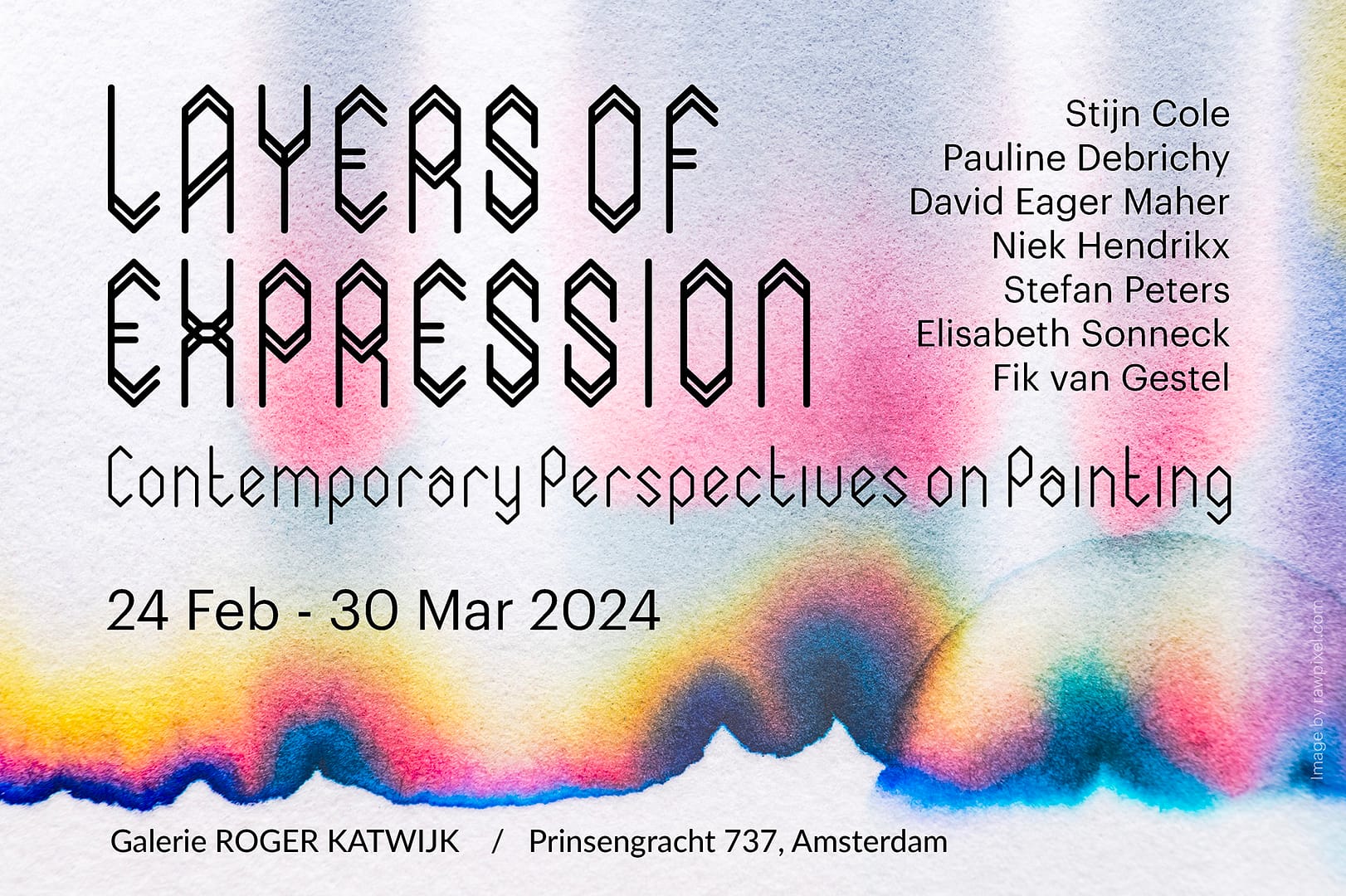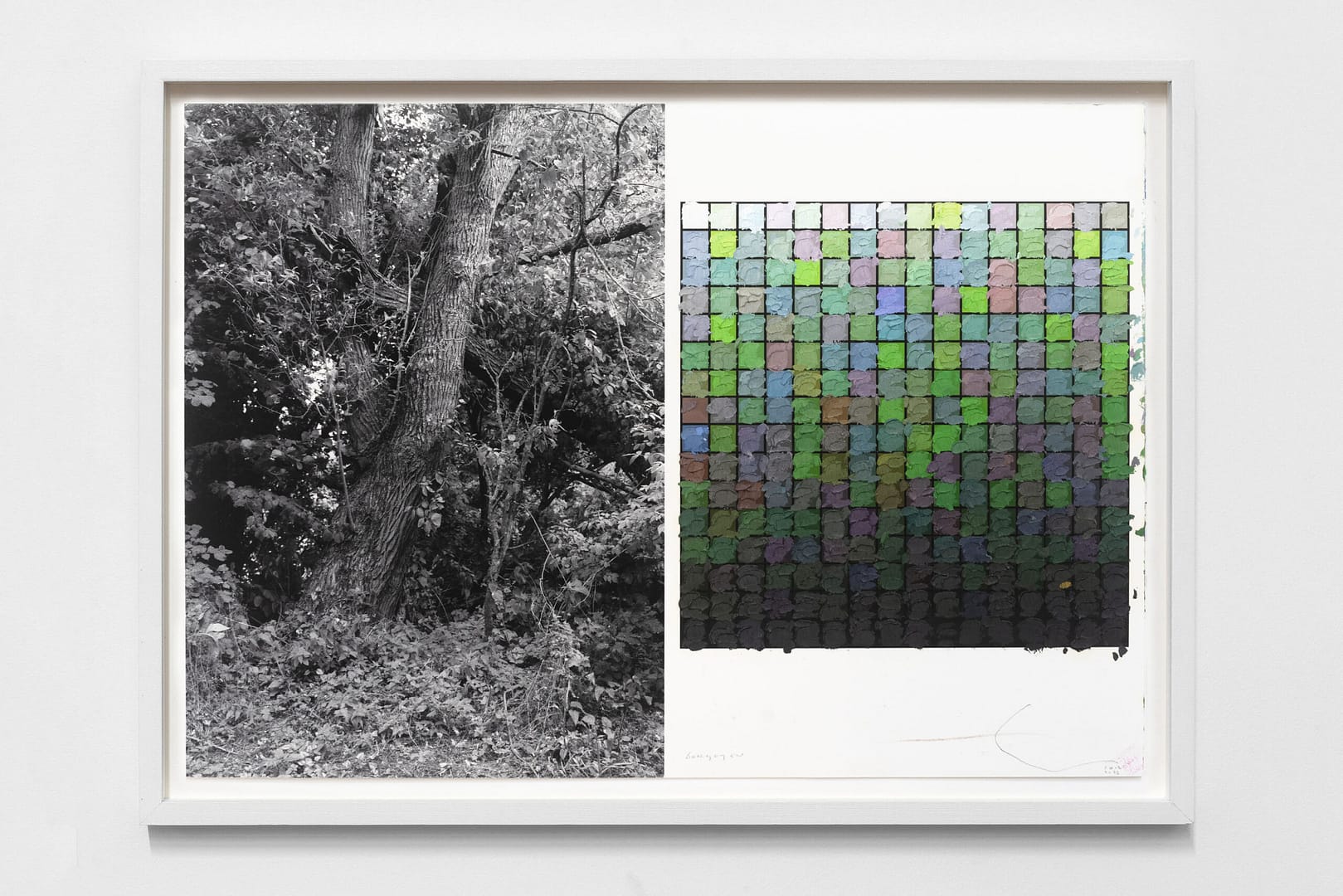Exhibitions
LAYERS OF EXPRESSION
‘Contemporary Perspectives on Painting’
Group exhibition curated by Stefan Peters
Participating artists: David Eager Maher / Elisabeth Sonneck / Pauline Debrichy / Niek Hendrix / Stijn Cole / Fik van Gestel
The exhibition is a tribute to painting: In the contemporary context, painting continues to hold a significant position within the art world, despite the rise of new media and digital technologies. While various art movements and disciplines have emerged in recent decades, painting has managed to maintain its relevance and remains an interesting and vibrant discipline. Painting has a rich history and artistic tradition that dates back centuries. This tradition provides a strong foundation for contemporary artists to build upon and position themselves within the art historical context.
Stijn Cole draws inspiration from the environment to express concepts like time, perception, light and color, and how people see and experience reality. In his works Cole employs a wide range of mediums, combining abstract and figurative media to produce a cohesive whole in which content and form complement one another, demonstrating aprofoundly creative understanding of the world around us.
Stijn Cole’s art explores the relationship between colors and forms and how they are perceived indifferent light and temporal conditions.
Pauline Debrichy research through three-dimensional site-specific installations, sculptures or photography, the relationship between humans and their environment. She interested in the daily architecture, urban development but also the perception of private and public space. For each new project, the starting point is the place where she stand; this might be a city, a building or a room. With materials such as concrete, metal or wood, she tend to offer a new reading of space, bringing to the forefront what have been overlooked. Within the process of making, it happened that unexpected but valuable mistakes generated new texture. Although everything is carefully planned, the material takes over, challenging me as a maker. She then integrate these happy accidents into the final work, to switch from surprise and unease to decision and embrace. The presented concrete slabs are fragments of a monumental site-specific installation titled “Sur la pointe des pieds » as a mirror image of a window. The colors left by the cast became a major element of the work. Each slab is unique; its position has been carefully chosen to suggest a stream of color; strengthening, at the same time, the invitation to the audience to climb on the work and change perspective.
David Eager Maher’s complex paintings reflect the collapse of cultural certainties and conventional social narratives. Nevertheless, there is tenuous but stubborn coherence in his visual stories and theatrical mise-en-scènes; their disparate elements are held together by imagination and a faint sense of hope, connections that may be obscure to the viewer but are surely felt by the artist. They are positioned somewhere between the past and the future. Several of his most recent pieces, small in scale and with fragmentary texts rendered in rough handwriting below the images, bear traces of cultural nostalgia.
Niek Hendrix considers the images of painting, iconic or not, as an open-source. He activates them by repeating them and by placing them in a different context. This appropriation is not to make an exact copy but to create a different image of it. He paints them with a different brushstroke, a different paint, colors are let go off, appearing in shades of black and white, and also the dimensions are different from the originals. He places them in front of works from different times or adds a work of his own hands. In unexpected constellations he puts the viewer to the test: they must not only look again but also give meaning again.
Stefan Peters researches the possibilities of painting. He reduces the medium to its most elementary form: the gesture of the brush stroke. A painting results, after all, from interaction between the countless strokes that interweave, overlap and blend on its surface. By making the brush stroke autonomous and fully exploiting its suggestive possibilities, Peters demonstrates that the illusory power of paint is such that, even at a microlevel, it can evoke complete landscapes, panoramas, river valleys and cloudy skies.
Elisabeth Sonneck In the multiple overlapping of freehand, slow brushstrokes, Elisabeth Sonneck develops complex color spectra with minimal tonal differences as well as sharp contrasts. In site-specific installations, her paintings on long sheets of paper enter into a direct dialog with the physical movement of the viewer. Sonneck’s „scroll paintings“, since 2006, are flexible curvatures in space that arise from the reversibility and metamorphosis of the painted paper with its inherent material tension. As temporary embodiments, they show flowing variations between lying, hanging, standing, leaning. The balances are often precarious and set the straight color rhythms into rotating movements. These constellations also include everyday objects. Found remnants, broken tools, marginal characteristics of the space itself become supports or counterweights to balance the paper installation – protagonists of a fragile color situation in which space and work process merge. The „worthlessness“ of unprocessed, used objects collides with painting; at the same time, both counterparts combine in functional symbioses. Like the found objects, the painting concealed in the rolled-up parts of the paper installation also eludes an economy of maximum yield. The fragility of the paper, precarious balances, the worn objects open up the poiesis of the impermanent – perceived in concrete color shades.
Fik van Gestel’s oeuvre is an ode to unpretentious painting. As an artist, he strives for ‘pictorial fireworks’: no more, no less.
Making his way in the visual arts in the latter days of Conceptual Art, van Gestel was one of the advocates of a new approach to painting in the 1980’s. Yet his colourful, almost Expressionist touch sets him apart of the ‘Grey School’, which included Luc Tuymans, Bert de Beule and Guy Van Bossche. He has a strong sense of light and colour, but undoubtedly, his tactile sensibility is the most striking. This sensibility allows him to focus on the nuances of the paint while working. He looks for the essence of the painting in the painting process itself. It is not only a physical but also a mental process by which the subject of his painting is contained in his thoughts, feelings and his experiences with the world surrounding him.





